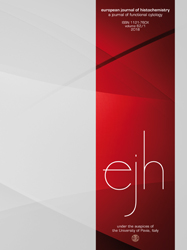 Smart Citations
Smart CitationsSee how this article has been cited at scite.ai
scite shows how a scientific paper has been cited by providing the context of the citation, a classification describing whether it supports, mentions, or contrasts the cited claim, and a label indicating in which section the citation was made.
Exploring the efficacy of AMACR, ERG, and AR immunostains in prostatic adenocarcinoma and their association with novel grade groups
The study examines the utility of AMACR, ERG, and AR immunostains in diagnosing prostatic adenocarcinoma (PCa) and assessing prognosis in comparison to the Gleason score and new WHO grading groups. Seventeen PCa biopsies and five benign prostatic hyperplasia (BPH) biopsies were analyzed. Immunoreactivity, scored from 1 to 3 based on percentage of positive cells and intensity of expression, was assessed, revealing 76.47% positivity for AMACR, 35.29% for ERG, and 94.12% for AR in PCa cases, with variable scores and intensity among markers and grade groups. AMACR sensitivity and ERG specificity were noted. Higher-grade PCa exhibited increased positivity for both markers, indicating prognostic significance. In BPH cases, AMACR showed positivity in 2 cases, ERG in 1, and AR in all cases, albeit with lower expression. Differential expression was observed among immunomarkers and grade groups of malignancy. AMACR and ERG stains serve as sensitive and specific markers for PCa diagnosis and prognosis. Their increasing positivity with higher-grade groups underscores prognostic value. These findings highlight the importance of immunostains in refining PCa diagnosis and prognostication.
Edited by
Ethical approval was obtained from the Research Ethics Committee, College of Medicine, King Khalid UniversitySupporting Agencies
Deanship of Scientific Research at King Khalid University, Abha, Saudi ArabiaHow to Cite

This work is licensed under a Creative Commons Attribution-NonCommercial 4.0 International License.
PAGEPress has chosen to apply the Creative Commons Attribution NonCommercial 4.0 International License (CC BY-NC 4.0) to all manuscripts to be published.








